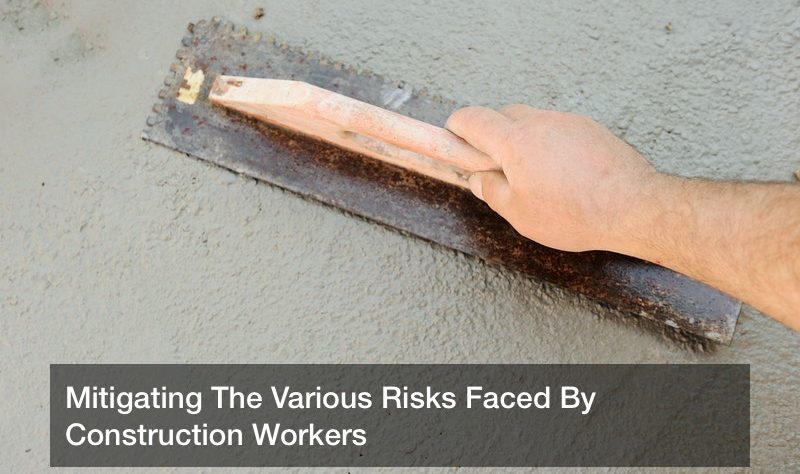
Construction work often requires the use of tools and equipment at a considerable height from the ground. This practical necessity makes falling from a height the number one cause of work-related fatalities at construction sites. Other than the danger posed by falls, construction workers face several other dangers while on the job. This article looks at these potential dangers and the various safety strategies that workers can use to overcome them.
Negating the Risk Posed by Falls
The primary way in which construction workers eliminate the risk of a fatal fall while at height is through the use of safety straps and ropes. Despite being able to save lives, these safety straps can cause significant harm to a falling worker’s body. The sudden jerk experienced when the safety rope reaches maximum length is capable of causing significant damage to the limbs and backbone. Furthermore, safety straps and ropes cannot keep a crewman from hitting hard and sharp objects they encounter on the way down.
Fortunately, construction workers can eliminate some of these potential risks from a fall by installing metal fabric safety nets. Metal fabric safety nets make use of sheets of stainless steel wire mesh that are held in place using a connect chain and fittings. Once installed, the stainless steel metal fabric mesh can stretch to cushion the fall of a crewman adequately. The safety nets can also safely capture heavy falling equipment and tools, thereby eliminating potential risk to bystanders and workers below.
Tackling Dangers Arising while Using Chain Slings
Construction crewmen often lift heavy objects using various rigs made from connect chain and fittings. Adjustable chain slings make it easy to lift loads requiring multiple attachment points. Despite being heavier than wire and fiber slings, alloy steel chain slings often pose a lower risk to crewmen that the lighter alternatives. The connect chain and fittings that makeup chain slings are more durable and can handle greater load capacities. Chain slings are also better able to lift loads with an off-center point of gravity. This is because the individual legs of a chain sling are capable of bearing forces arising from the shifting weight.
However, even chain slings can snap on the job resulting in both bodily harm and fatalities. The first step to eliminating danger while using chain slings is making sure that they are made from alloy steel. The reason being, connect chain and fitting made from lower quality steel have lower load-bearing capacities.
Before embarking on any lifting job, crewmen should check the chain sling for any visible signs of wear. Workers should also check for signs of rust, cracks and warps on individual chain links and on the hooks at the ends.
Tackling Dangers Arising While using Shackles
Anchor shackles are also an integral construction site component. They are used in load lifting operations in conjunction with a connect chain and fittings. They are used in the construction of scaffolding, in supporting electric cabling and numerous other tasks. Anchor shackles come in different sizes to suit different load capacities. Despite being made from high strength steel, anchor shackles can also fail and result in considerable harm to crewmen.
The first step to minimize the risk posed from faulty shackles is to check that they are in good condition. This involves checking for signs of wear and tear in a similar manner as with chain slings. Crewmen must also ensure they use the right anchor shackle for the right job. There are two types of anchor shackles in common use, the bow and dee shackles. The bow anchor shackle is suitable for connecting multiple components, while the dee type is suited to connecting only two components.
Furthermore, workers should ensure the SWL of the shackle is adequate for the job. The acronym SWL stands for a safe working load and is used to indicate the maximum load capacity. SWLs range from 330 kilograms to 150 metric tonnes. Finally, workers should ensure that the safety pin is attached to keep the shackle for getting undone due to vibration or weight shifts.
In Conclusion
Most of the safety concerns on a construction site can be eliminated through the proper care of construction tools and equipment. It is, however, mandatory for workers to use the right safety equipment at all times.
